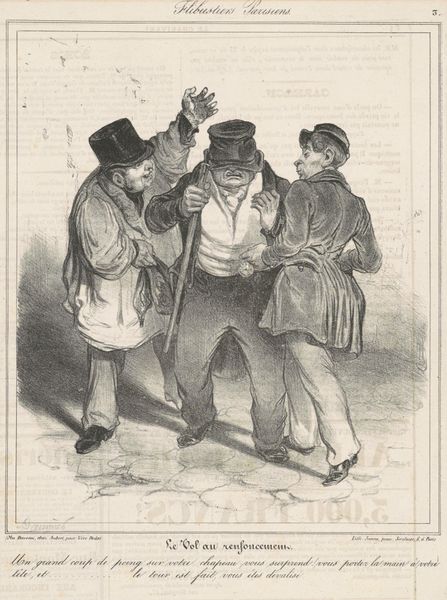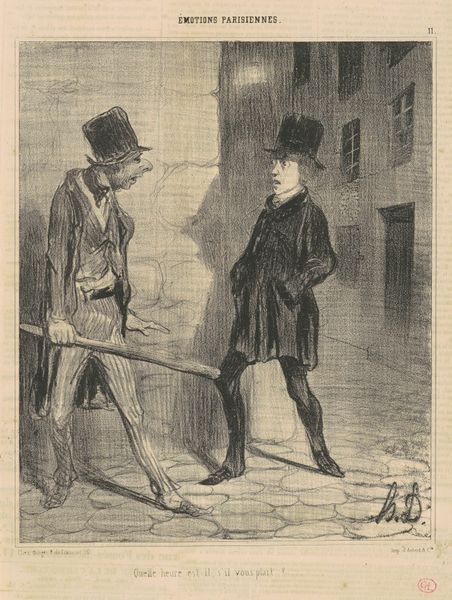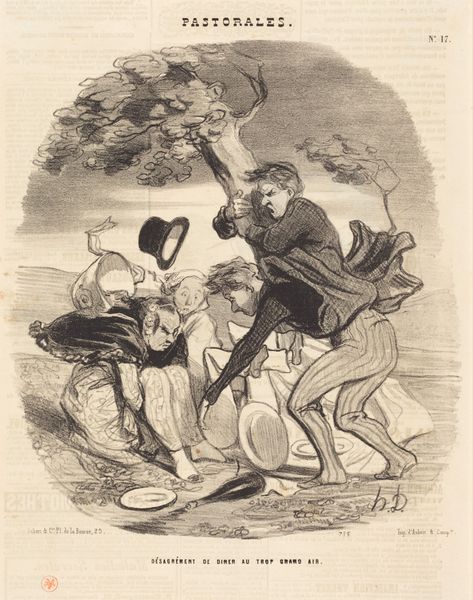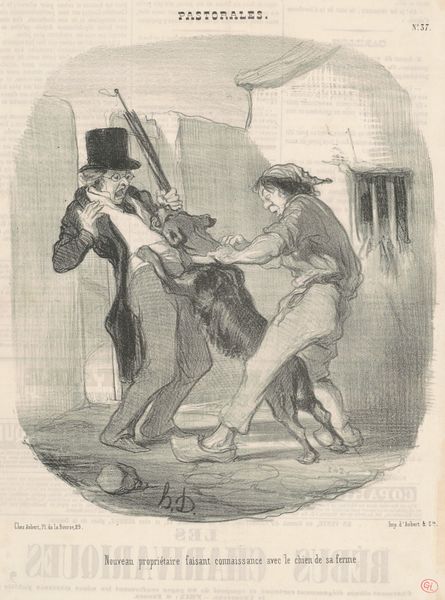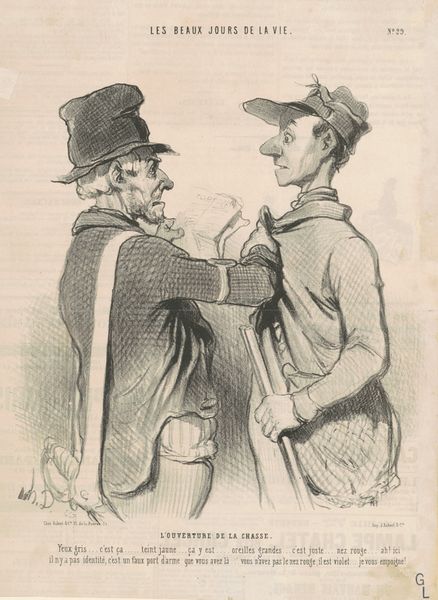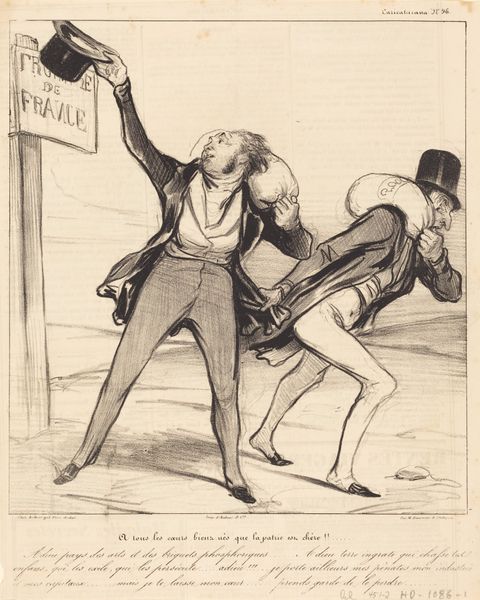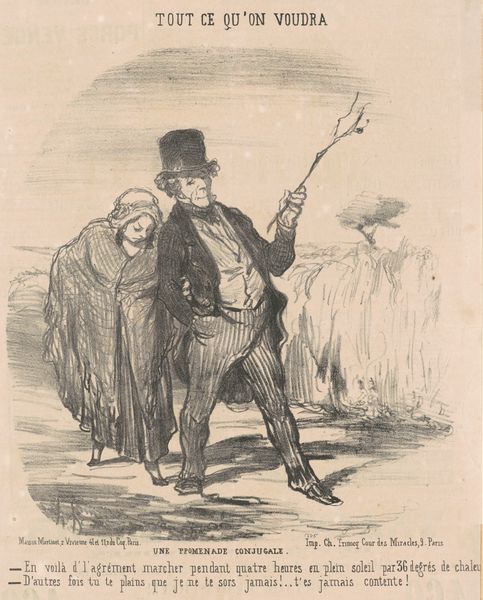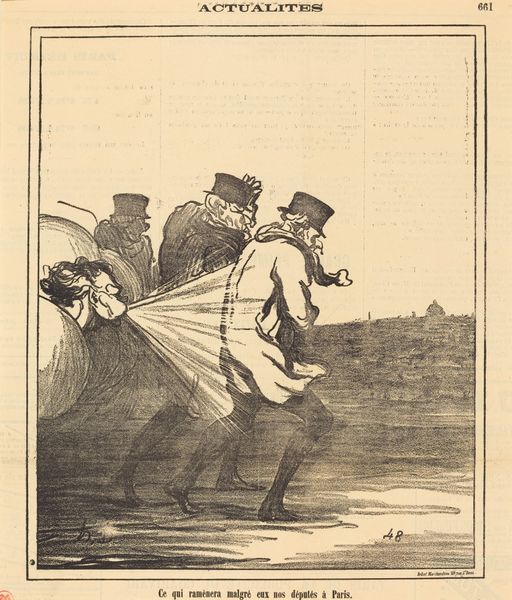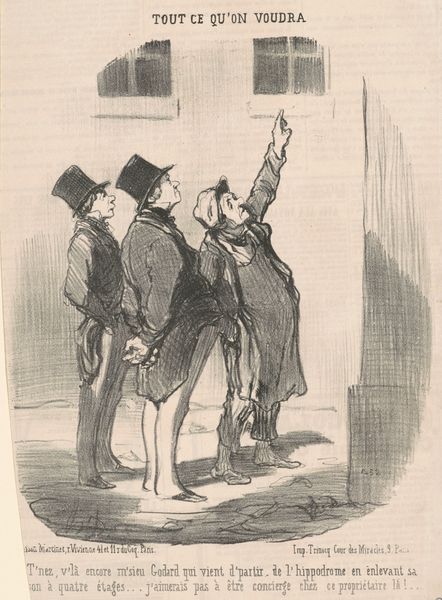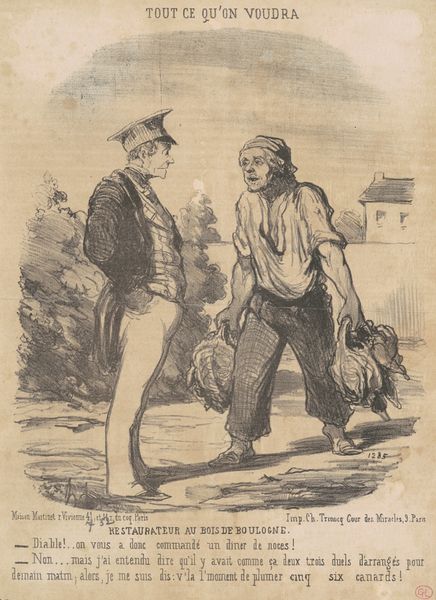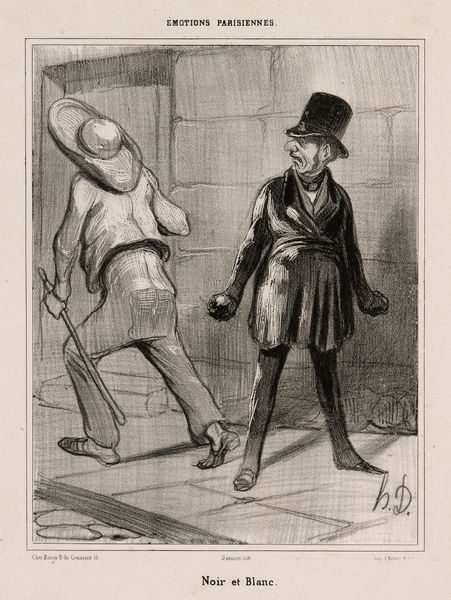
Copyright: National Gallery of Art: CC0 1.0
Honoré Daumier's "Sur les boulevards de Paris" was achieved through lithography, a printmaking technique using a stone or metal plate with a smooth surface. Daumier's skill in this medium allowed him to capture the essence of Parisian life with remarkable detail, which could be reproduced efficiently for mass consumption. The inherent qualities of lithography, such as its ability to render subtle tonal variations and crisp lines, are evident in the figures’ expressions, clothing, and the bustling atmosphere of the boulevards. The social significance of lithography lies in its accessibility, enabling artists like Daumier to disseminate their work widely, bypassing traditional art markets and engaging directly with the public. Daumier's choice of lithography also reflects the changing landscape of art production in the 19th century, where new technologies democratized access to art and transformed the relationship between artists, their work, and society. Ultimately, understanding the materials, the making, and the historical context is crucial for fully appreciating the artwork's cultural significance.
Comments
No comments
Be the first to comment and join the conversation on the ultimate creative platform.
